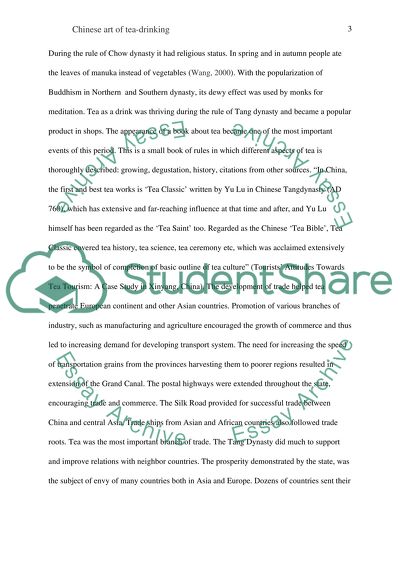Cite this document
(Chinese Art of Tea-Drinking Assignment Example | Topics and Well Written Essays - 2124 words, n.d.)
Chinese Art of Tea-Drinking Assignment Example | Topics and Well Written Essays - 2124 words. Retrieved from https://studentshare.org/culture/1647772-discuss-the-development-of-chinese-tea-art-from-the-tang-dynasty-until-recent-times-in-china-or-overseas
Chinese Art of Tea-Drinking Assignment Example | Topics and Well Written Essays - 2124 words. Retrieved from https://studentshare.org/culture/1647772-discuss-the-development-of-chinese-tea-art-from-the-tang-dynasty-until-recent-times-in-china-or-overseas
(Chinese Art of Tea-Drinking Assignment Example | Topics and Well Written Essays - 2124 Words)
Chinese Art of Tea-Drinking Assignment Example | Topics and Well Written Essays - 2124 Words. https://studentshare.org/culture/1647772-discuss-the-development-of-chinese-tea-art-from-the-tang-dynasty-until-recent-times-in-china-or-overseas.
Chinese Art of Tea-Drinking Assignment Example | Topics and Well Written Essays - 2124 Words. https://studentshare.org/culture/1647772-discuss-the-development-of-chinese-tea-art-from-the-tang-dynasty-until-recent-times-in-china-or-overseas.
“Chinese Art of Tea-Drinking Assignment Example | Topics and Well Written Essays - 2124 Words”, n.d. https://studentshare.org/culture/1647772-discuss-the-development-of-chinese-tea-art-from-the-tang-dynasty-until-recent-times-in-china-or-overseas.


